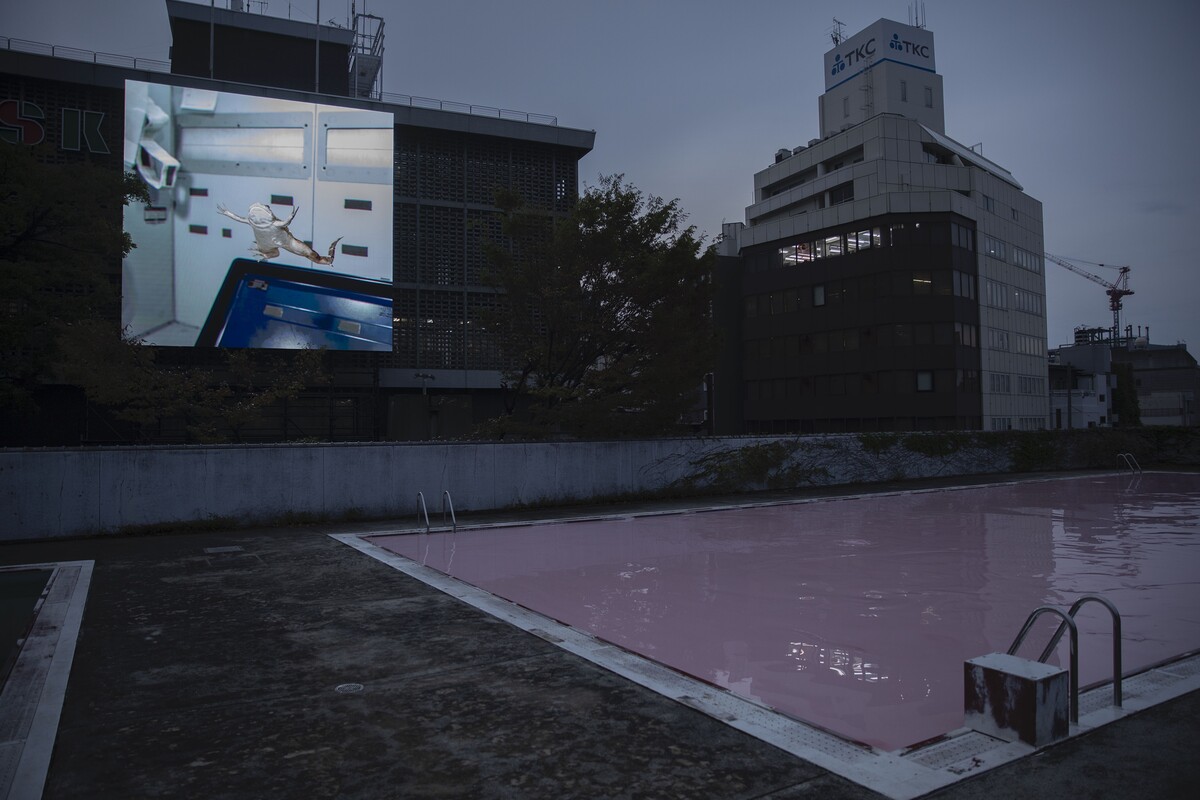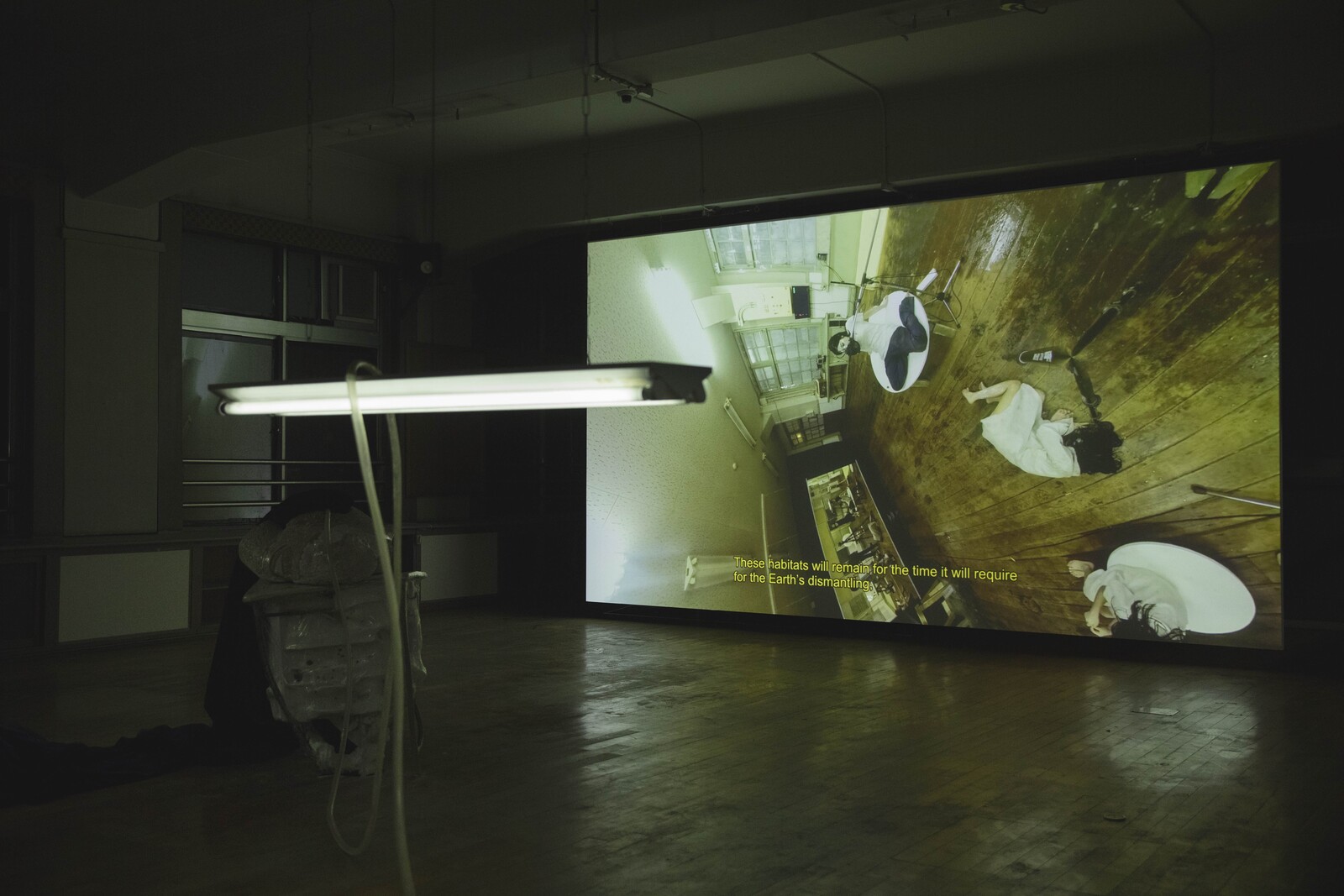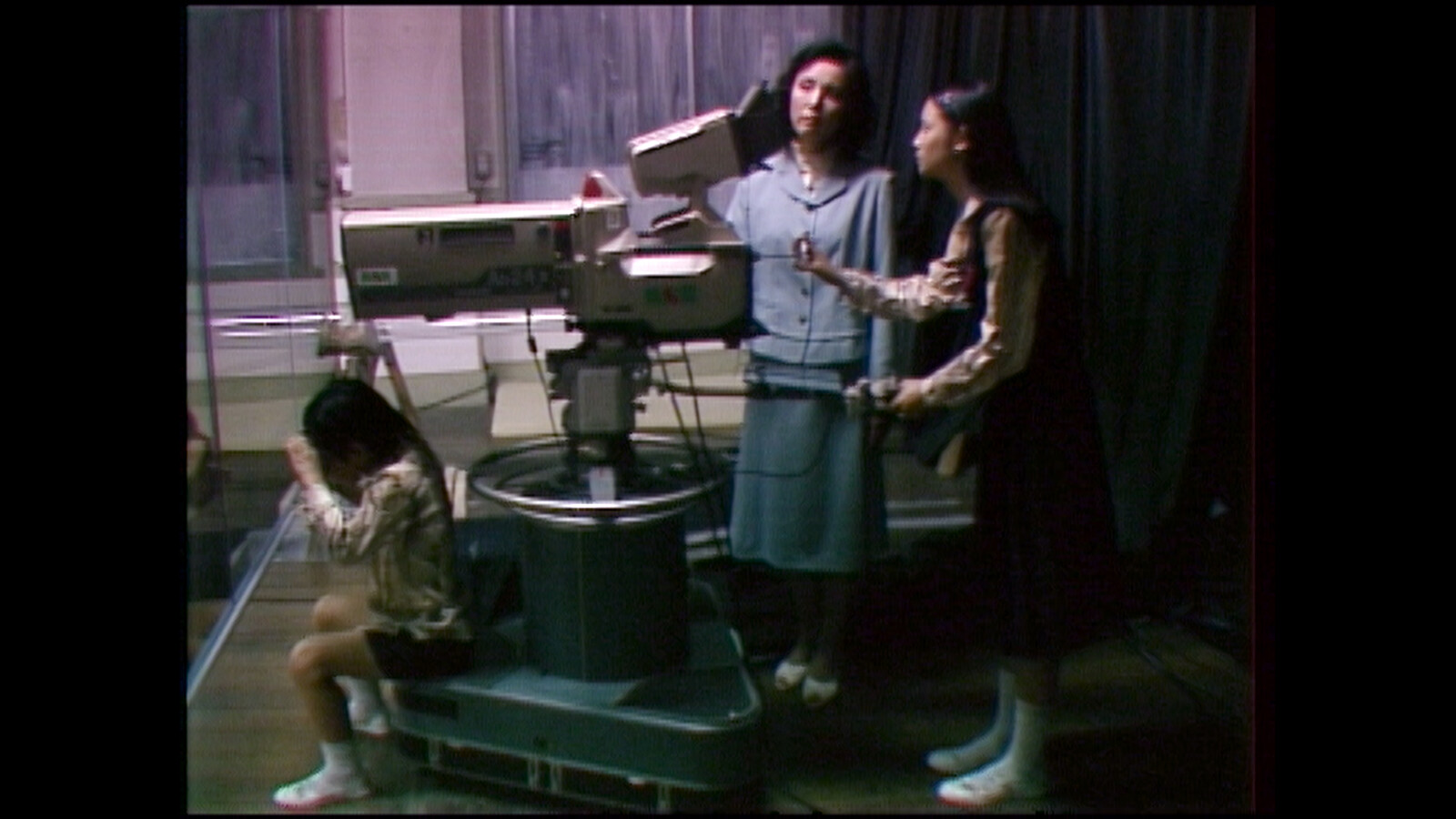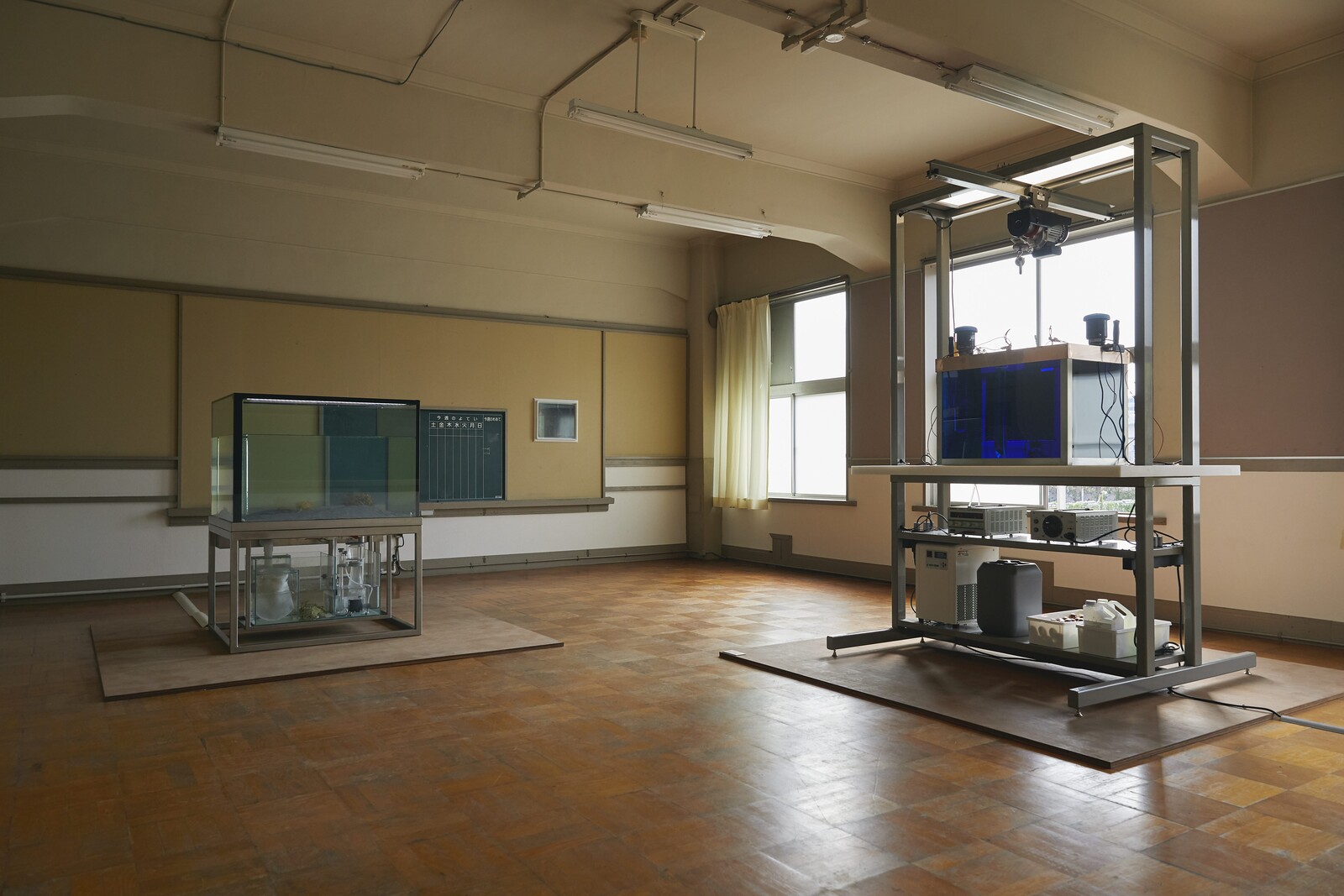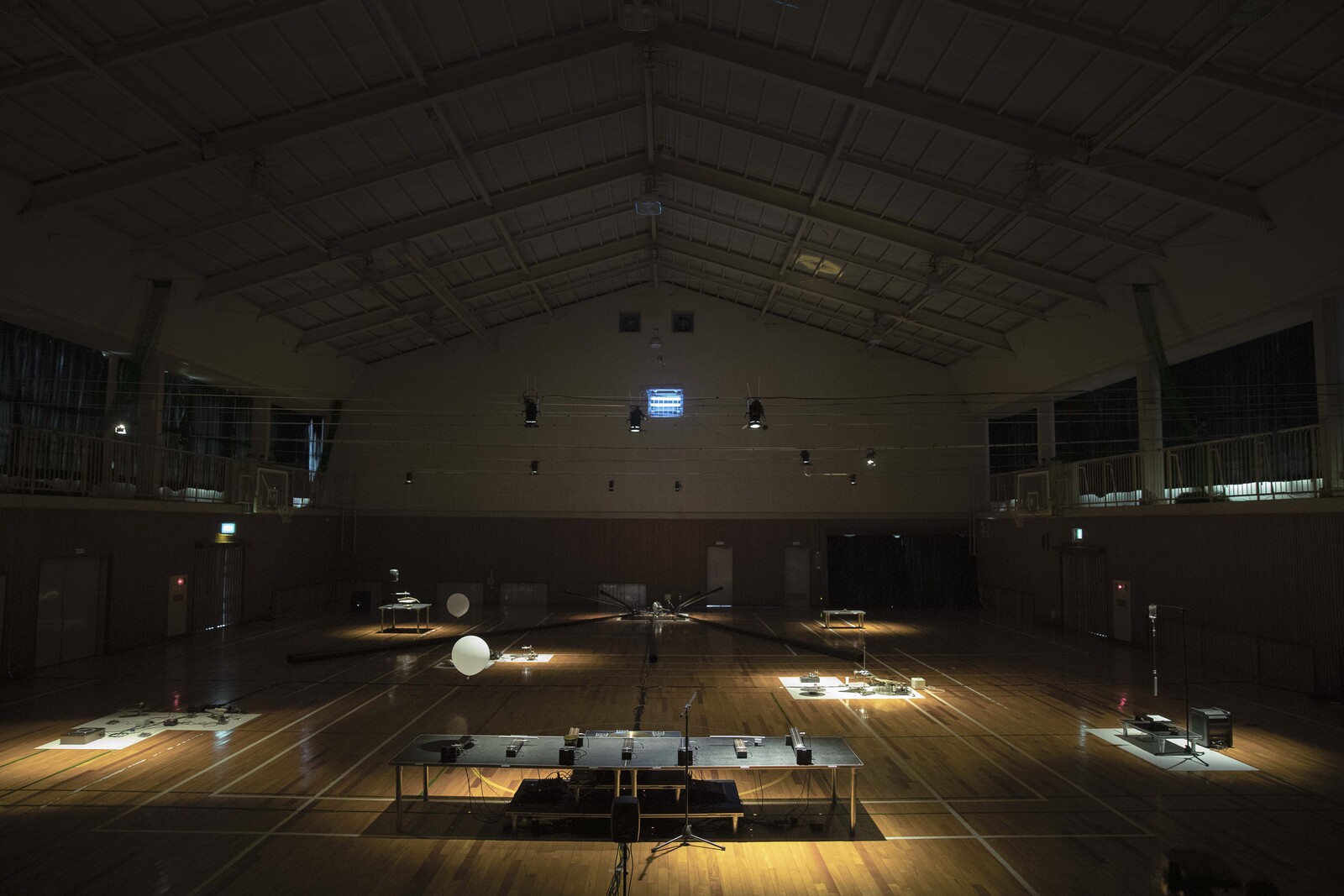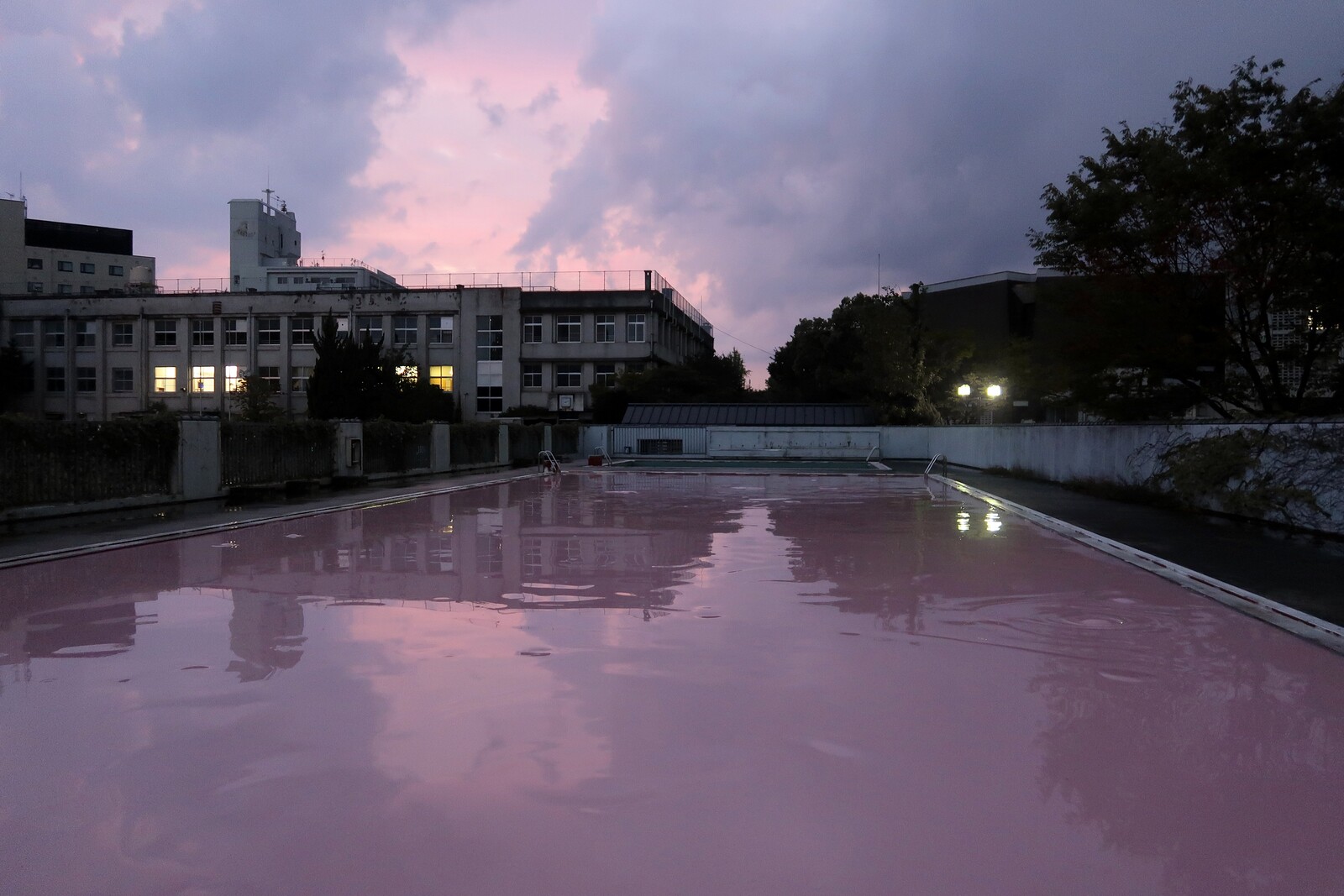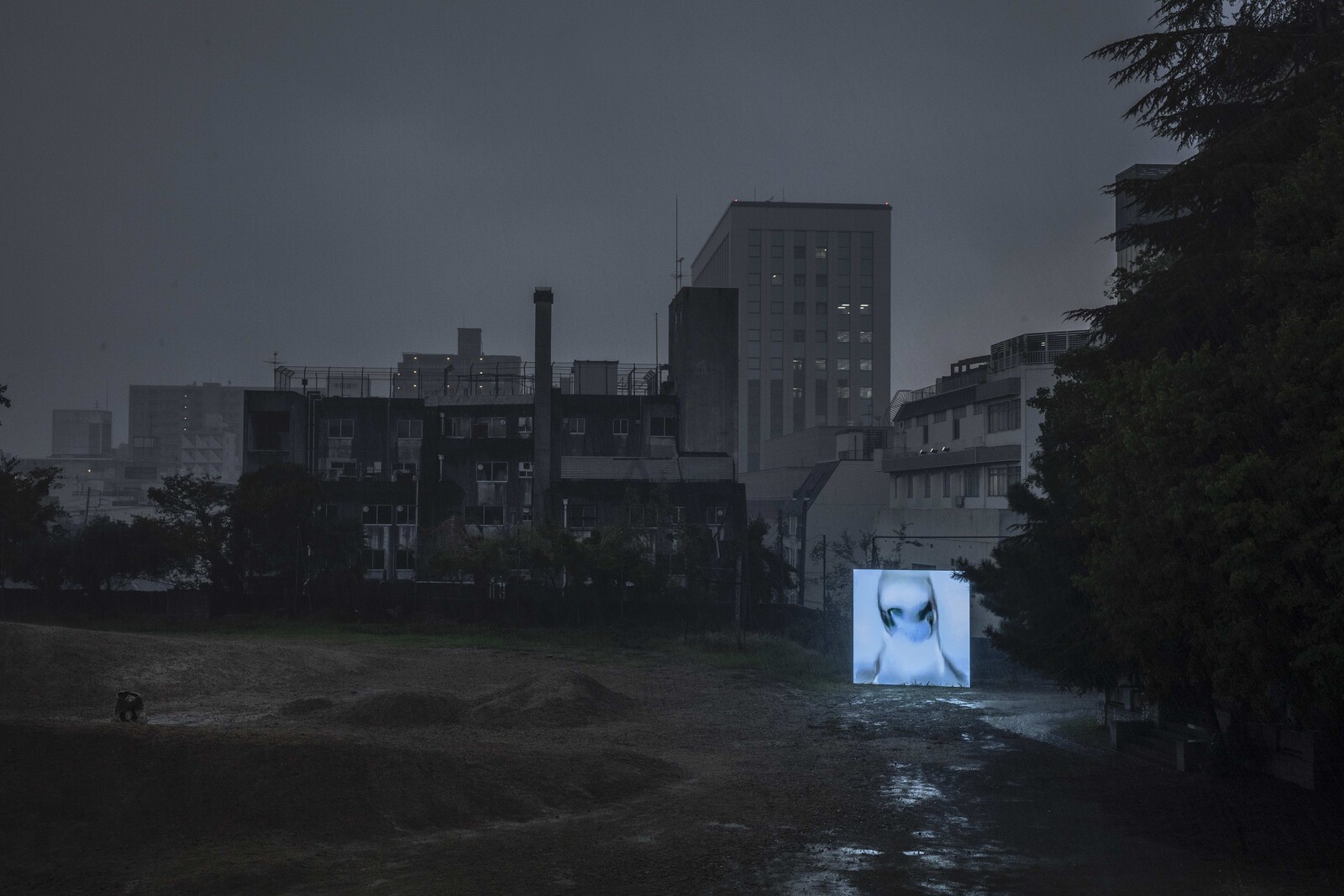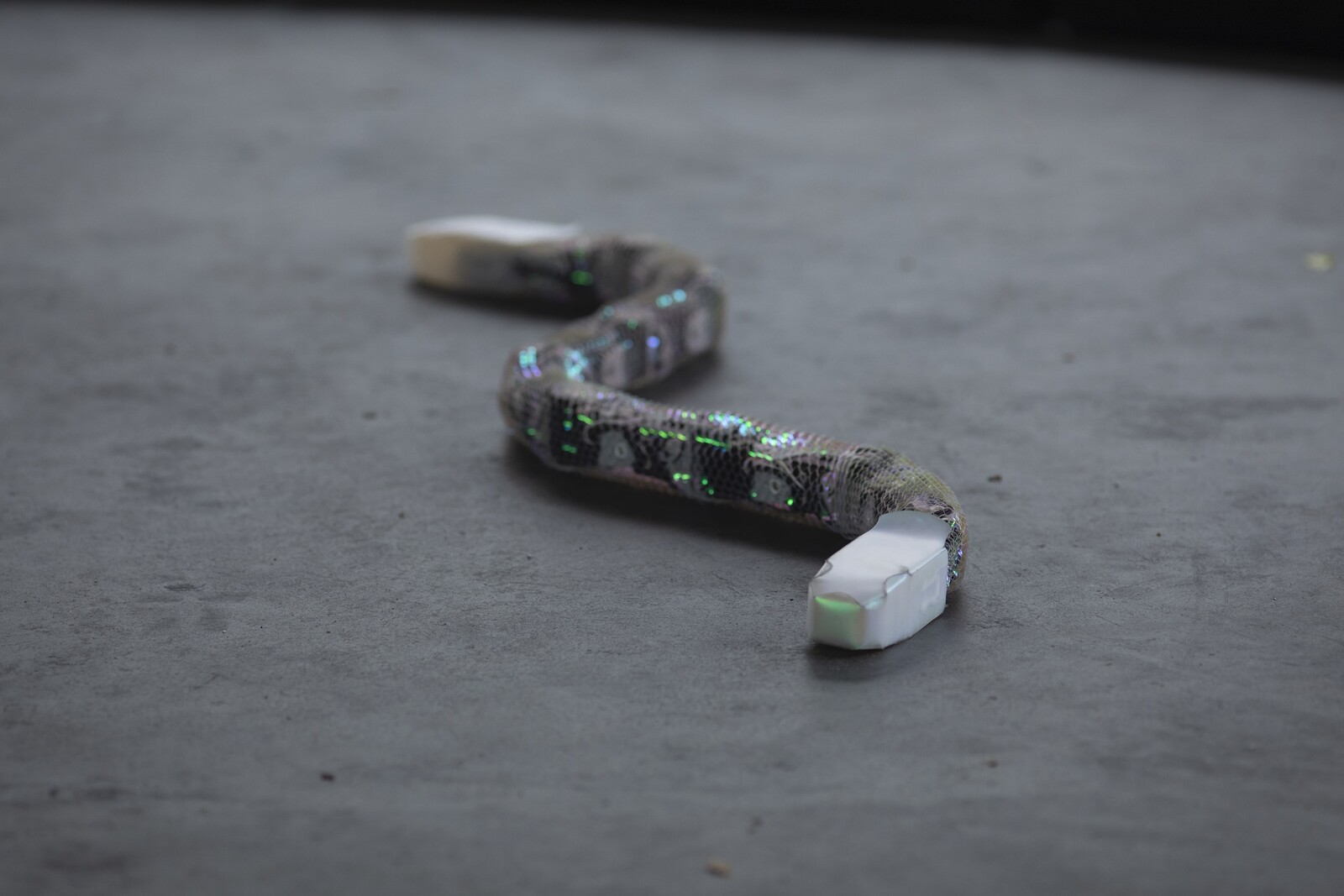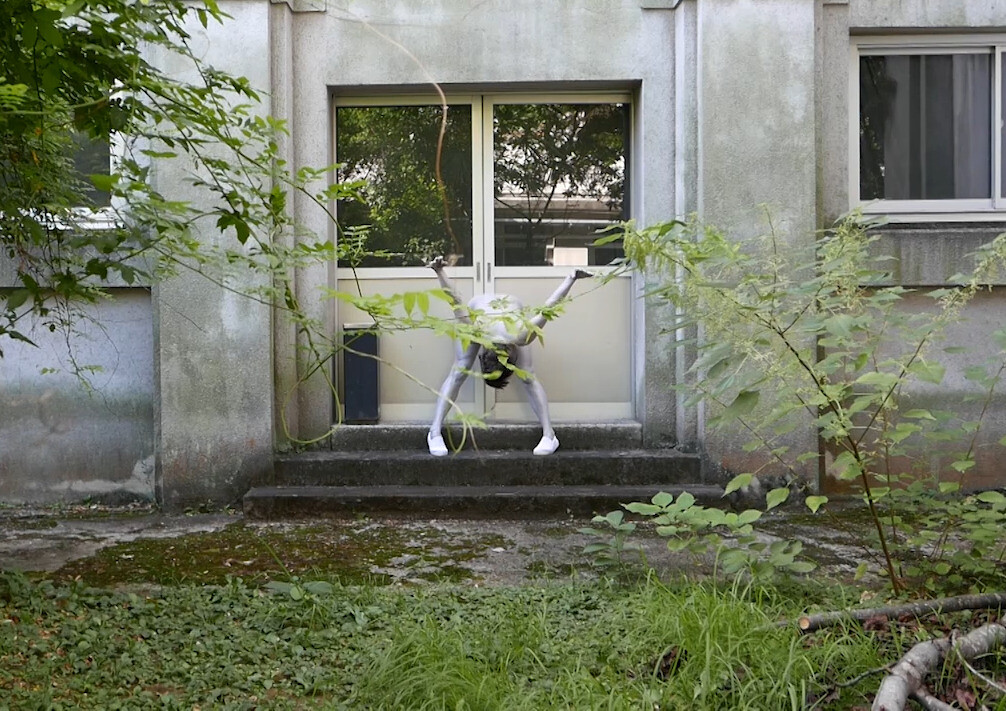It’s hard not to acknowledge the ongoing tension surrounding the Aichi Triennale when writing about contemporary art in Japan at the moment. The recent announcement that the government’s Agency for Cultural Affairs has pulled the Triennale’s funding following a controversy over censorship, sparked protest calling into question the validity of public money poured into the cultural sector.1 The Okayama Art Summit distinguishes itself from this appalling situation—being a private initiative formed by Yasuharu Ishikawa, fashion entrepreneur and art collector, and gallerist Taro Nasu, both from the city. The two partnered with the local municipality to set their agenda and become part of the city’s transforming cultural and architectural landscape with a pleasant distance from local politics.
Titled “IF THE SNAKE” and convened by Pierre Huyghe as artistic director, the Okayama Art Summit 2019 is comprised of 18 artists and collaborative projects spread across the city, and set up as a living entity, infinitely in formation through its biological, technological, and economic ties. The exhibition’s conceit is open ended, yet it also evokes the well-known ouroboros symbol of continual life and death cycles, mythologies of awakening, and vitality conjured through renewed ways of seeing. Huyghe positions the singularity of this subject as being one in an infinite number of possibilities—a lateral undulation of forms.
In the former Uchisange Elementary School, artists Fabien Giraud and Raphaël Siboni present works from their episodic long-term project, including newly commissioned The Everted Capital (1971 - 4936) The Unmanned, Episode 2, Season 2 (2019), which speculates on the future of value when the Earth is depleted of resources and no longer inhabitable. Central to the work is a video projection from a 24-hour durational performance, edited in real time using deepfake technology and featuring a predominantly female cast. A small monitor set in the upper corner of an empty classroom shows a televised speech by former US President Richard Nixon, dubbed using a female voice speaking English with a heavy Japanese accent. The public announcement calls for immediate migration from Earth onto a superstructure built for future generations, and also warns against any illusions of home, as the planet is pulled apart by increasing rotational speed. A sculptural installation spills across several rooms, which are punctuated with precision-cut holes, primitive assemblages, and salt mineral formations—all featured in the film’s narrative, providing viewers with clues that may help them decipher the associative nature between the plot and cinematic history.
The staging of curious experiments continues in a lab-like room displaying a collaborative work by Pierre Huyghe and Matthew Barney, Not Yet Titled (2019). Huyghe presents an aquarium that contains a marine ecosystem, while Barney’s Cathode in Refugium (2019) is a continuation of the artist’s experiments in developing anomalies in copper plate engravings immersed in electrolytic solution. The pair of glass tanks coexist, slowly developing independently and awaiting their eventual combination into one work, highlighting the exhibition’s interest in bringing living and nonliving elements together. The school’s spacious gymnasium is transformed into a spot-lit stage for Tarek Atoui’s archeological and electroacoustic experiment, Glitter Beats and Wild Synths (2019), assembling instruments such as horns, bones, stone plates, and other organic elements. Fernando Ortega’s bug zapper Untitled (2003) is hung from the ceiling and programed to cut the power supply each time a fly is electrocuted. Outside the school’s courtyard, on the facade of the RSK Sanyo Broadcast Radio Center is John Gerrard’s X. laevis (Spacelab) (2017), a monumental screen transmitting a reenactment of a fertility test conducted on frogs in space. Below the projection is Pamela Rosenkranz’s Skin Pool (Oromo) (2019), a surreal installation of a synthetic, pinkish body of water, which reflects a dialogue on biogenetics and engineered identity.
Throughout the different projects, the Summit rattles with the calculations of subjects governed by technological and telematic influences, visualizing the constant evolutionary process of machine learning. Ian Cheng’s BOB (Bag of Beliefs) (2018–19) is a digital, chimeric AI serpent, which sheds belief systems and updates behavioral patterns in response to the objects and situations it encounters. Eva L’Hoest’s arresting VR work Under Automata (2017), shown in the basement of the Meiji-era Fukuoka Soy Sauce Factory, looks like an underwater shipwreck but is actually the image of a plane, showing passengers momentarily frozen during a long-haul flight. Using gaming technologies, the grayscale 3D scan renders the spectral forms as fragmented, corporeal shells while the camera passes along the central aisle in slow motion, and a mournful soundtrack is played in the background.
Shown at the Hayashibara Museum of Art are two works borrowing the figure of Ann Lee, a fictional manga character that Huyghe and Philippe Parreno purchased from a Japanese animation company in 1999 and began to make artworks using her image. In Huyghe’s faintly projected video Two Minutes out of Time (2000), Ann Lee mutters about her transcendental experience of viewing a painting until she disappears. Moments after the apparition-like projection ends, a young schoolgirl enters from a dark corner of the room, choreographed by Tino Sehgal. In his work using the character, Ann Lee (2011–19), the girl introduces herself as a four-dimensional realization of the anime figure, surfacing from deep media space, or perhaps from an even deeper subconscious. Ann Lee speaks about her own presence in the museum and asks, “What is the relation between hope and melancholy?”
Huyghe’s platforming of artistic collaboration seems to originate from the idea of art as an ecosystem, and conjures Vilém Flusser’s notion of “technical images as a kind of secretion of a global nervous system.”2 Situated to generate a deviated, ulterior world outside formalized institutional settings, the exhibited works are an eerie reminder to Japanese audiences that humankind has perhaps reached a point past spectacle, where we are cybernetically governed by imagery itself. Will this imagery soon overpower bureaucratic censorship and forceful acts of imagery control through accelerating ambiguity, distortion, and unpredictability? In the interaction of art and technology through intellectual empathy, Huyghe’s curatorial premise posits the exhibition as a state of synthetic, self-generating processes, and our communication as a process of increasing abstraction.
The exhibition “After ‘Freedom of Expression?’,” which had been a center of controversy for containing artworks related to Japan’s war history, such as comfort women and Emperor Hirohito, reopened for the last week of the Triennale.
Vilém Flusser, Into the Universe of Technical Images, trans. by Nancy Ann Roth (Minneapolis: University of Minnesota Press, 1985), 125.
